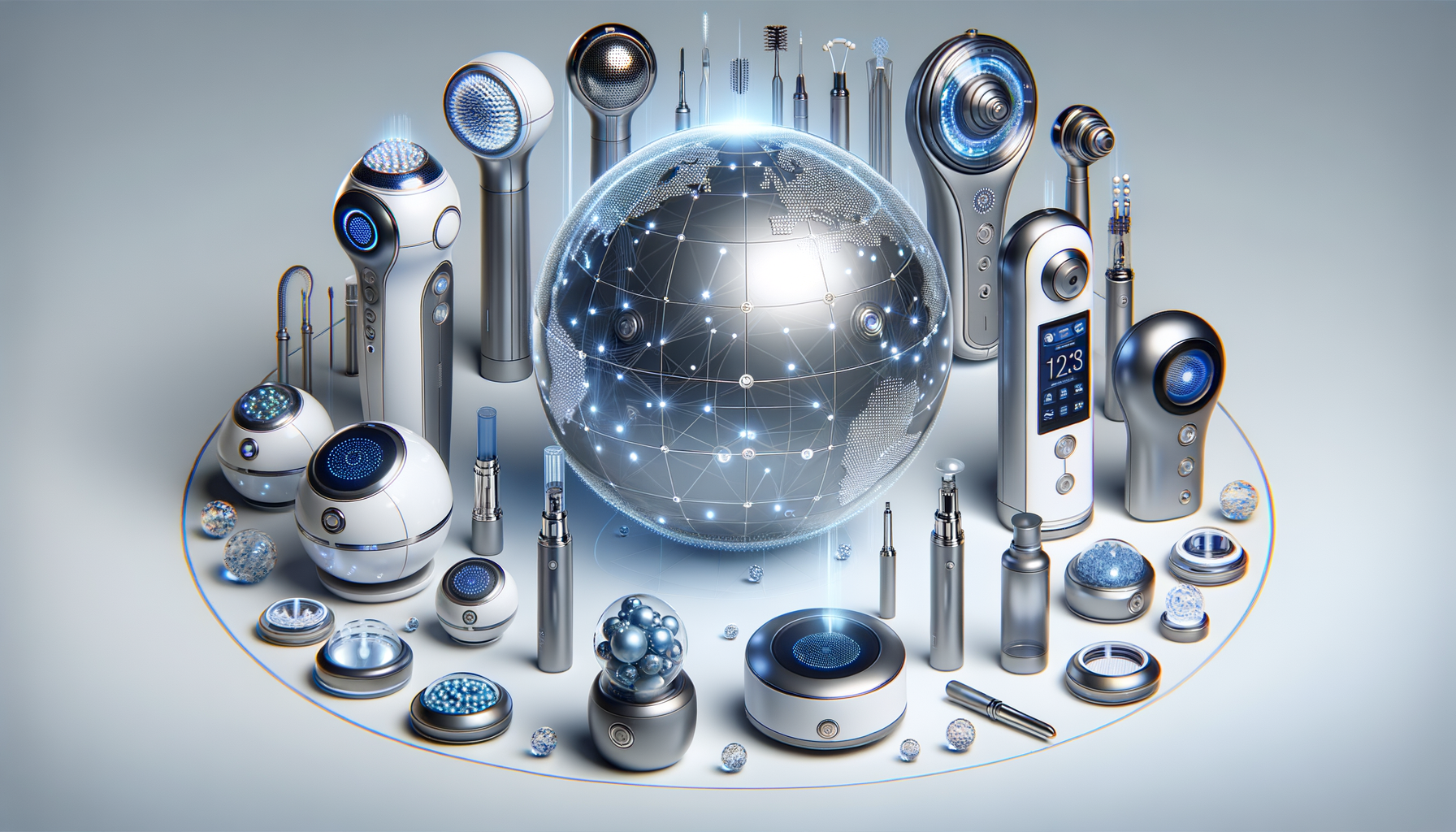The Rise of Tech-Driven Skincare Solutions
In recent years, the skincare industry has witnessed a significant shift towards technology-driven solutions. As consumers increasingly seek effective ways to achieve smoother, youthful-looking skin, innovations in technology have provided a range of options that promise enhanced results. From laser treatments to ultrasound therapies, these advancements offer non-invasive and minimally invasive alternatives to traditional skincare methods. This section delves into the factors driving the popularity of tech-driven skincare solutions and how they are transforming the beauty industry.
One of the primary reasons behind the rise of tech-driven skincare is the growing demand for non-surgical options that deliver visible results without extensive downtime. Consumers are more informed and are seeking treatments that are not only effective but also safe and convenient. This demand has spurred the development of various devices and treatments that leverage cutting-edge technology to target specific skin concerns.
Moreover, technological advancements have made these treatments more accessible and affordable. As more clinics and dermatologists adopt these innovations, consumers have a wider range of options to choose from, making it easier to find a solution that fits their needs and budget. The combination of efficacy, convenience, and affordability has made tech-driven skincare an attractive option for many.
Laser Treatments: Precision and Efficacy
Laser treatments have become a cornerstone of tech-driven skincare, offering precision and efficacy in addressing various skin issues. These treatments work by using concentrated beams of light to target specific areas of the skin, promoting collagen production and reducing the appearance of fine lines, wrinkles, and other imperfections. There are several types of laser treatments available, each designed to address different skin concerns.
For instance, fractional laser treatments are renowned for their ability to rejuvenate the skin by creating micro-injuries that stimulate the body’s natural healing process. This results in the production of new collagen and elastin, leading to smoother and firmer skin. On the other hand, ablative lasers remove the outer layers of the skin, making them ideal for treating deeper wrinkles and scars.
While laser treatments can offer impressive results, it’s essential for consumers to understand the potential risks and downtime associated with these procedures. Consulting with a qualified dermatologist is crucial to determine the most suitable treatment based on individual skin type and concerns.
Ultrasound Therapy: Harnessing Sound Waves for Skin Rejuvenation
Ultrasound therapy is another innovative technology that has gained popularity in the quest for smoother skin. This non-invasive treatment uses focused ultrasound energy to penetrate deep into the skin’s layers, stimulating collagen production and tightening the skin. Unlike laser treatments, ultrasound therapy bypasses the surface of the skin, making it a suitable option for those with sensitive skin or darker skin tones.
One of the most well-known ultrasound treatments is micro-focused ultrasound, which targets the deeper layers of the skin to lift and tighten areas such as the face, neck, and décolletage. This treatment is often referred to as a “lunchtime lift” due to its minimal downtime and quick procedure time, allowing individuals to return to their daily activities immediately after treatment.
The results of ultrasound therapy can be long-lasting, with improvements in skin texture and firmness continuing for several months after the procedure. However, it’s important for individuals to have realistic expectations and understand that multiple sessions may be required to achieve optimal results.
Radiofrequency Treatments: Heat for Collagen Stimulation
Radiofrequency (RF) treatments have emerged as a popular option for those seeking to improve skin texture and elasticity. This technology uses controlled radiofrequency energy to heat the deeper layers of the skin, stimulating collagen production and promoting skin tightening. RF treatments are versatile and can be used on various parts of the body, including the face, neck, and abdomen.
One of the advantages of RF treatments is their ability to deliver consistent results with minimal discomfort. The heat generated by the radiofrequency waves is carefully controlled, ensuring that the treatment is both safe and effective. Additionally, RF treatments are suitable for all skin types, making them an inclusive option for individuals with diverse skin tones.
While RF treatments are generally well-tolerated, it’s important for individuals to follow post-treatment care instructions to maximize results and minimize any potential side effects. As with any cosmetic procedure, consulting with a qualified professional is essential to ensure the treatment is tailored to individual needs.
LED Light Therapy: A Gentle Approach to Skin Improvement
LED light therapy offers a gentle yet effective approach to improving skin health. This treatment uses different wavelengths of light to target various skin concerns, such as acne, fine lines, and hyperpigmentation. LED light therapy is non-invasive and painless, making it an appealing option for those seeking a relaxing treatment with no downtime.
Different colors of LED light have specific benefits for the skin. For example, blue light is often used to combat acne by targeting the bacteria responsible for breakouts, while red light helps reduce inflammation and promote collagen production. Some devices combine multiple wavelengths to address a range of skin issues in one session.
LED light therapy can be performed in a professional setting or at home using portable devices. While at-home devices offer convenience, professional treatments often provide more powerful results. Consistency is key with LED light therapy, and regular sessions are recommended to maintain and enhance results over time.




Leave a Reply